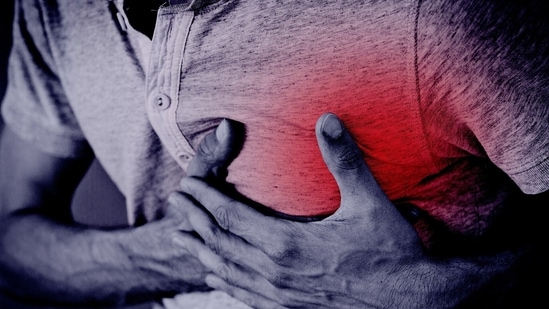Our coronary heart is without doubt one of the most vital organs in our physique. Nonetheless, in at this time’s fast-paced life, it’s continuously beneath pressure. Usually, stress, unhealthy life, and silent medical situations take a toll on our hearts, generally triggering critical emergencies like a coronary heart assault or cardiac arrest.
Additionally Learn | Dentist says lacking 3 issues whereas brushing enamel is harming your oral well being: ‘Not cleansing knowledge enamel with…’
For a lot of, each coronary heart assault and cardiac arrest are the identical situations, as they have an effect on the guts. Nonetheless, based on Dr Rajeev Vashisth, senior marketing consultant, cardiothoracic and vascular surgical procedure, HCG Hospitals, Bhavnagar, recognising the distinction, particularly in the course of the golden hour, the primary 60 minutes after signs start, will be the deciding issue between survival and irreversible harm.
Coronary heart assault vs cardiac arrest
Per Dr Vashisth, a coronary heart assault, or medically generally known as myocardial infarction, happens when a number of of the coronary arteries that provide blood to the guts muscle turn into blocked, often by a clot shaped over a fatty plaque. With out oxygen-rich blood, that a part of the guts muscle begins to die.

Widespread signs embrace:
- Chest ache or angina, usually spreading to the arm, shoulder, neck, or jaw
- Shortness of breath
- Nausea or vomiting
- Chilly sweats
- Gentle-headedness or sudden fatigue
Dr Vashisth explains, “The signs could develop out of the blue or regularly, however one factor is fixed: the necessity for pressing medical care. The golden hour of the primary 60 minutes is a essential window throughout which well timed intervention, similar to remedy or an emergency angioplasty, can restore blood move, cut back harm to the guts, and enhance survival.”
In the meantime, a cardiac arrest, alternatively, is much extra abrupt. It happens when the guts’s electrical system malfunctions, inflicting the guts to cease pumping blood successfully. “This results in a direct lack of consciousness, pulse, and respiration. With out pressing CPR and defibrillation, dying can happen inside minutes,” Dr Vashisth explains. Listed below are some key warning indicators he instructed:
- Sudden collapse
- No respiration or pulse
- Lack of responsiveness
“In contrast to a coronary heart assault, cardiac arrest presents no sluggish build-up. It calls for instantaneous motion, calling emergency companies, beginning chest compressions, and utilizing an automatic exterior defibrillator (AED) if out there (CPR),” Dr Vashisth identified.
Analysis and therapy
Per Dr Vashisth, for a coronary heart assault, medical doctors depend on ECGs, blood assessments (to detect coronary heart muscle enzymes), and imaging assessments like angiography to find and deal with blockages. “Speedy therapy could contain clot-busting medicine, angioplasty, or stent placement to revive blood move,” he provides.
In the meantime, for cardiac arrest, time is life. “Analysis occurs on the spot. If somebody is unresponsive and never respiration, it’s seemingly a cardiac arrest. If out there, bystanders ought to begin CPR instantly and use an automatic exterior defibrillator (AED). Emergency groups will use superior life help and medicines, and will carry out procedures to stabilise the affected person as soon as they attain the hospital,” he suggested.
Be aware to readers: This text is for informational functions solely and never an alternative to skilled medical recommendation. All the time search the recommendation of your physician with any questions on a medical situation.


